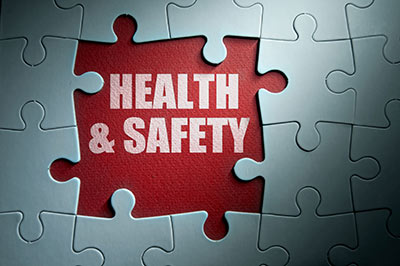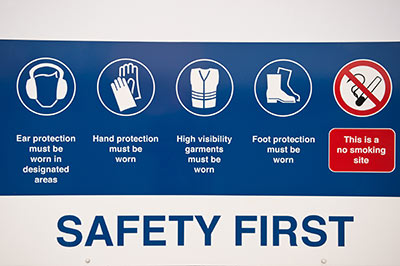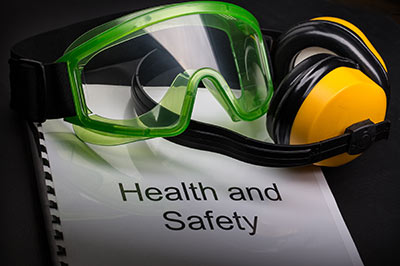This joint statement provides a framework supported by educators for improving school safety and increasing access to mental health supports for children and youth. Efforts to improve school climate, safety, and learning are not separate endeavors. They must be designed, funded, and implemented as a comprehensive school-wide approach that facilitates interdisciplinary collaboration and builds on a multitiered system of supports. We caution against seemingly quick and potentially harmful solutions, such as arming school personnel, and urge policy leaders to support the following guidance to enact policies that will equip America’s schools to educate and safeguard our children over the long term.
Category: Guides and Manuals
Health and Safety Guide for K–12 Schools in Washington
The Guide’s primary focus is to recommend good health and safety practices to help ensure safer schools. It is not aimed at preventing intentional violence in schools. Violence in schools has been extensively addressed elsewhere, including numerous documents on the Washington State Office of Attorney General and OSPI websites.
Mitigating Hazards in School Facilities
Mitigation is any sustained action taken to reduce or eliminate long-term risk to life and property from a hazard event. ― FEMA
School safety is a human concern, one that every school and community must take seriously and strive continually to achieve. It is also a legal concern; schools can be held liable if they do not make good-faith efforts to provide a safe and secure school environment.
How schools are built and maintained is an integral part of school safety and crisis planning. Schools with poor access control are more vulnerable to intruders. Students in schools with overlapping pickup and drop off points are more likely to be hurt by a bus or car. Schools that store materials in stairways will have egress problems during a fire or emergency.
Mitigating Hazards_NCEF
Safety, Security & Health Assessment Safe and Healthy Schools Support Division
Department of Public Instruction for Public Schools of North Carolina produced this form to assist in assessing the health and safety of educational facilities.
Guide for Developing a School District Safety and Health Plan for Career and Technical Education Programs and Courses
On August 3, 1977, the New Jersey (NJ) State Board of Education first adopted rules and regulations covering career and technical education safety and health standards. Since that time, the code has been revised to make local programs stronger and more effective in reaching the following shared goals:
- The elimination of injuries and illnesses resulting from participation in career and
- technical education courses and programs
- Safer workers will leave our programs; and,
- Achieve improved compliance with state and federal regulations.
This guide (pages 3-14) is intended to assist NJ school districts in preparing a safety and health program and plan that meets the requirements of the current Safety and Health Standards found under N.J.A.C. 6A:19-6. A copy of the code has been attached as Appendix I (pages 15-18).
District Wide Safety Plan Checklist: Required Component and Regulatory Citation
The District-wide School Safety Plan includes strategies for improving communication among students, and between students and staff, and reporting of potentially violent incidents, such as the establishment of youth-run programs, peer mediation, conflict resolution, creating a forum or designating a mentor for students concerned with bullying or violence, and establishing reporting mechanisms for school violence.
New Jersey School Safety and Security Plans
The New Jersey Department of Education takes proactive measures to protect the safety and security of all our students and staff members. All school districts in New Jersey are required to have a school safety and security plan. Each plan must be designed locally with the help of law enforcement, emergency management, public health officials and all other key stakeholders. All plans must be reviewed and updated on an annual basis. These plans include procedures to respond to critical incidents ranging from bomb threats, fires and gas leaks, to an active shooter situation.
This document provides the required elements that must be included in every district’s school safety and security plan. The requirements are not a step-by-step guide for completing a comprehensive emergency response plan, but rather define the minimum elements that should be included in the plan, including the planning process.
School Security and Safety Plan Standards
Recognizing the need for an “all-hazards” emergency preparedness and response capability for schools, Connecticut state government has expanded its role as a partner in ensuring the safety, security, and emergency preparedness of the state’s local educational facilities. In keeping with Public Act 13-3, Section 86, the Department of Emergency Services and Public Protection/Division of Emergency Management and Homeland Security (DESPP/DEMHS), in consultation with the Department of Education, re-convened a multi-jurisdictional, multi-disciplinary working group to review and revise as needed the School Security and Safety Plan Standards and the accompanying School Security and Safety Plan Template which were released last year to help schools and the surrounding communities meet all-hazards threats.
School Crisis Team Roles
Some of the roles and responsibilities that each school crisis team member may assume in the event of a crisis situation are listed below. Some personnel may assume more than one role and perform several tasks. Required tasks may depend on the type of crisis situation a school is experiencing. Please note the suggested staff members who might be assigned the roles below but training and personality characteristics should be taken into consideration when selecting specific staff members to fulfill role. Staff members must be trained for their role.
Climate Control: Safety by Design
Schools, both new and old, can incorporate design principles that increase safety and security and subtly signal the appropriate behavior for public, semipublic, and private spaces.









